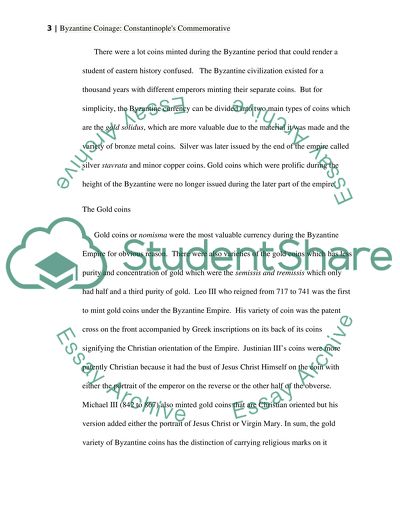Byzantine Coinage: Constantinople's Commemoratives Research Paper. Retrieved from https://studentshare.org/history/1456432-byzantine-coinage-constantinople-s-commemoratives
Byzantine Coinage: Constantinople'S Commemoratives Research Paper. https://studentshare.org/history/1456432-byzantine-coinage-constantinople-s-commemoratives.


